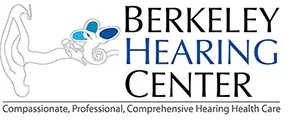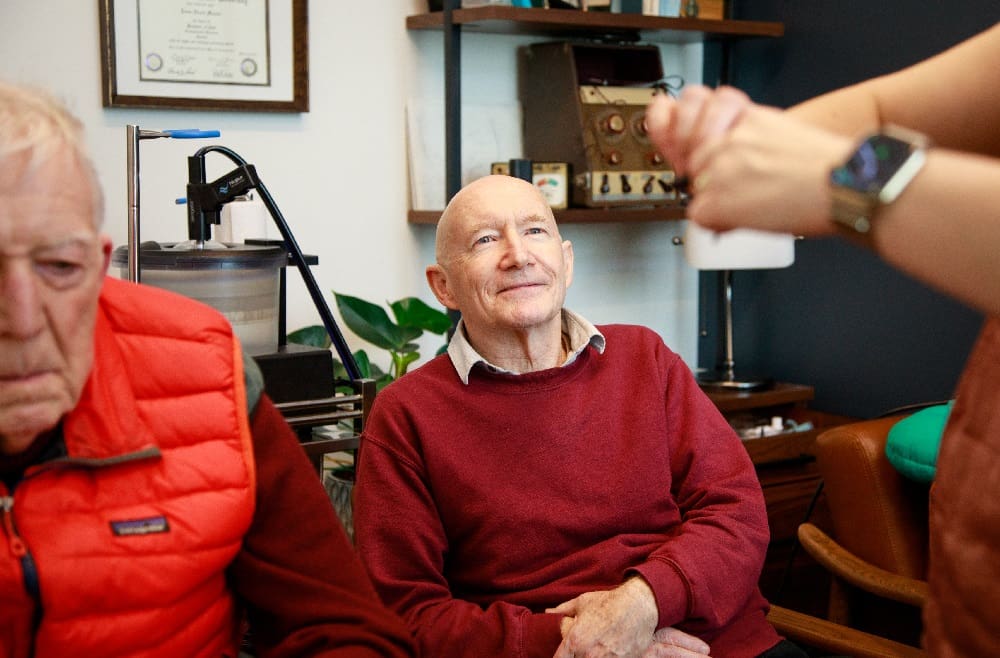2020-02-28
John Chakan, Co-Owner/Practice Manager
[et_pb_section fb_built="1" _builder_version="4.19.0" width="100%" custom_padding="15px||0px||false|false" global_colors_info="{}"][et_pb_row _builder_version="4.19.0" background_size="initial" background_position="top_left" background_repeat="repeat" width="100%" custom_padding="0px||25px||false|false" animation_style="fade" global_colors_info="{}"][et_pb_column type="4_4" _builder_version="4.19.0" _module_preset="default" global_colors_info="{}"][et_pb_text ul_item_indent="30px" ol_item_indent="30px" admin_label="Introduction" _builder_version="4.25.1" _module_preset="default" header_2_font_size="28px" header_3_font_size="21px" global_colors_info="{}"]
Among the best options for promoting greater independence and improving your quality of life is a hearing aid. However, like any tool, hearing aids only work when they are in your ears and performing according to design.
Troubleshooting hearing aid problems doesn’t have to be frustrating or difficult! With the help of a trained hearing care professional, you can figure out what the problem is and get it sorted sooner, so you can get back to hearing clearly with your devices.
Many frustrated patients end up tossing their hearing aids in the junk drawer along with their other unused gadgets because they can’t get them to work correctly. Getting my patients to stick with their hearing aids and receive the critical help they provide is one of my most significant challenges as an audiologist.
Looking for a hearing aid troubleshooting guide? Some of the most common hearing aid issues can be pretty easily fixed up—it just depends on what the issue is.
[/et_pb_text][/et_pb_column][/et_pb_row][et_pb_row _builder_version="4.19.0" background_size="initial" background_position="top_left" background_repeat="repeat" width="100%" custom_padding="0px||25px||false|false" animation_style="fade" global_colors_info="{}"][et_pb_column type="4_4" _builder_version="4.19.0" _module_preset="default" global_colors_info="{}"][et_pb_text ul_item_indent="30px" ol_item_indent="30px" admin_label="Wearing Discomfort " _builder_version="4.25.1" _module_preset="default" header_2_text_color="#12589c" header_2_font_size="28px" header_3_font_size="21px" locked="off" global_colors_info="{}"]
Wearing Discomfort
[/et_pb_text][/et_pb_column][/et_pb_row][et_pb_row _builder_version="4.19.0" background_size="initial" background_position="top_left" background_repeat="repeat" width="100%" custom_padding="0px||25px||false|false" animation_style="fade" global_colors_info="{}"][et_pb_column type="4_4" _builder_version="4.19.0" _module_preset="default" global_colors_info="{}"][et_pb_text ul_item_indent="30px" ol_item_indent="30px" admin_label="Text" _builder_version="4.25.1" _module_preset="default" header_2_text_color="#12589c" header_2_font_size="28px" header_3_font_size="21px" locked="off" global_colors_info="{}"]
Just like glasses and braces, hearing aids take some getting used to—and some hearing aid faults are just due to your body getting used to wearing them each day.
Although modern devices are lighter weight than their predecessors, any localized weight or pressure that your body is not used to will cause discomfort. Help your body to adjust by wearing your hearing aids as long as you can each day, but take periodic breaks to let your body rest.
Those who wear two hearing aids need to make sure that the unit designed for the left ear (labeled with a blue mark) is in the left ear, and the one intended for the right ear (labeled by a red mark) is in the right ear.
Hearing aids can cause discomfort due to a buildup of earwax, as they stop the ear’s natural method for getting rid of earwax. A quick clean of your ears, whether at home with a safe solution or by an ear cleaning professional, can help remedy that.
Ongoing discomfort (a week or more) could mean there was an error in forming or fitting your hearing aid to the contours of your ear canals, which means that your provider will need to do a refitting.
[/et_pb_text][/et_pb_column][/et_pb_row][et_pb_row _builder_version="4.19.0" background_size="initial" background_position="top_left" background_repeat="repeat" width="100%" custom_padding="0px||25px||false|false" animation_style="fade" global_colors_info="{}"][et_pb_column type="4_4" _builder_version="4.19.0" _module_preset="default" global_colors_info="{}"][et_pb_text ul_item_indent="30px" ol_item_indent="30px" admin_label="Uncomfortable Sounds " _builder_version="4.25.1" _module_preset="default" header_2_text_color="#12589c" header_2_font_size="28px" header_3_font_size="21px" locked="off" global_colors_info="{}"]
Uncomfortable Sounds
[/et_pb_text][/et_pb_column][/et_pb_row][et_pb_row _builder_version="4.19.0" background_size="initial" background_position="top_left" background_repeat="repeat" width="100%" custom_padding="0px||25px||false|false" animation_style="fade" global_colors_info="{}"][et_pb_column type="4_4" _builder_version="4.19.0" _module_preset="default" global_colors_info="{}"][et_pb_text ul_item_indent="30px" ol_item_indent="30px" admin_label="Uncomfortable Sounds " _builder_version="4.25.1" _module_preset="default" header_2_text_color="#12589c" header_2_font_size="28px" header_3_font_size="21px" locked="off" global_colors_info="{}"]
When you had no hearing assistance from a hearing device, your brain got used to processing muffled sounds. The amplified sounds provided by your hearing aid produce a painful shock to your brain. When amplified, the sound of your own voice and background noise will cause discomfort.
Sticking with your hearing aids allows your brain to adjust to the amplification of sound. In the long run, the discomfort will decrease. Taking periodic breaks and reading aloud can help shorten your adjustment period.
[/et_pb_text][/et_pb_column][/et_pb_row][et_pb_row _builder_version="4.19.0" background_size="initial" background_position="top_left" background_repeat="repeat" width="100%" custom_padding="0px||25px||false|false" animation_style="fade" global_colors_info="{}"][et_pb_column type="4_4" _builder_version="4.19.0" _module_preset="default" global_colors_info="{}"][et_pb_text ul_item_indent="30px" ol_item_indent="30px" admin_label="Whistling or Squealing " _builder_version="4.25.1" _module_preset="default" header_2_text_color="#12589c" header_2_font_size="28px" header_3_font_size="21px" locked="off" global_colors_info="{}"]
Whistling or Squealing
[/et_pb_text][/et_pb_column][/et_pb_row][et_pb_row _builder_version="4.19.0" background_size="initial" background_position="top_left" background_repeat="repeat" width="100%" custom_padding="0px||25px||false|false" animation_style="fade" global_colors_info="{}"][et_pb_column type="4_4" _builder_version="4.19.0" _module_preset="default" global_colors_info="{}"][et_pb_text ul_item_indent="30px" ol_item_indent="30px" admin_label="Whistling or Squealing " _builder_version="4.25.1" _module_preset="default" header_2_text_color="#12589c" header_2_font_size="28px" header_3_font_size="21px" locked="off" global_colors_info="{}"]
Whistling or squealing are uncomfortable sounds you should never get used to because they are indicators of several hearing aid performance issues. These noises are equivalent to acoustic feedback associated with poorly adjusted sound equipment. Troubleshooting feedback issues includes:
[/et_pb_text][dsm_icon_list icon_color="#157bca" icon_gap_width="1.4em" icon_padding="2px" icon_font_size="22px" list_vertical_alignment="flex-start" list_space_between="4px" list_padding="||||false|false" admin_label="Troubleshooting feedback issues includes: " _builder_version="4.25.1" _module_preset="default" background_color="#FFFFFF" custom_margin="||15px||false|false" custom_padding="||||false|true" border_radii="off|||80px|" locked="off" global_colors_info="{}"][dsm_icon_list_child text="Difficulty hearing or understanding speech and other sounds coming from the side of the affected ear " font_icon="||divi||400" _builder_version="4.25.1" _module_preset="default" global_colors_info="{}"][/dsm_icon_list_child][dsm_icon_list_child text="Difficulty locating the source of a sound " font_icon="||divi||400" _builder_version="4.25.1" _module_preset="default" global_colors_info="{}"][/dsm_icon_list_child][dsm_icon_list_child text="Difficulty hearing in noisy environments " font_icon="||divi||400" _builder_version="4.25.1" _module_preset="default" global_colors_info="{}"][/dsm_icon_list_child][dsm_icon_list_child text="Ringing in the ear (tinnitus), specifically in the affected ear" font_icon="||divi||400" _builder_version="4.25.1" _module_preset="default" global_colors_info="{}"][/dsm_icon_list_child][dsm_icon_list_child text="Dizziness or balance issues, as the brain is not receiving full information from both ears" font_icon="||divi||400" _builder_version="4.25.1" _module_preset="default" global_colors_info="{}"][/dsm_icon_list_child][dsm_icon_list_child text="Difficulty participating in group conversations or following group discussions " font_icon="||divi||400" _builder_version="4.25.1" _module_preset="default" global_colors_info="{}"][/dsm_icon_list_child][dsm_icon_list_child text="Fatigue, as the brain has to work harder to process sound from only one ear " font_icon="||divi||400" _builder_version="4.25.1" _module_preset="default" global_colors_info="{}"][/dsm_icon_list_child][/dsm_icon_list][et_pb_text ul_item_indent="30px" ol_item_indent="30px" admin_label="Whistling or Squealing " _builder_version="4.25.1" _module_preset="default" header_2_text_color="#12589c" header_2_font_size="28px" header_3_font_size="21px" locked="off" global_colors_info="{}"]
It is important to note that the severity of these symptoms can vary depending on the degree and cause of the hearing loss.
[/et_pb_text][/et_pb_column][/et_pb_row][et_pb_row _builder_version="4.19.0" background_size="initial" background_position="top_left" background_repeat="repeat" width="100%" custom_padding="0px||25px||false|false" animation_style="fade" global_colors_info="{}"][et_pb_column type="4_4" _builder_version="4.19.0" _module_preset="default" global_colors_info="{}"][et_pb_text ul_item_indent="30px" ol_item_indent="30px" admin_label="No Sound " _builder_version="4.25.1" _module_preset="default" header_2_text_color="#12589c" header_2_font_size="28px" header_3_font_size="21px" locked="off" global_colors_info="{}"]
Unilateral Hearing Loss Treatment
Unilateral hearing loss management options may include hearing aids, cochlear implants, and assistive listening devices. In some cases, surgery may be necessary to correct the underlying cause of the hearing loss.
The management of unilateral hearing loss, also known as single-sided deafness, can include a combination of different treatments, depending on the underlying cause of the hearing loss and the severity of the symptoms.
Some common management options include:
[/et_pb_text][et_pb_accordion open_toggle_text_color="#157BCA" open_toggle_background_color="#FFFFFF" closed_toggle_text_color="#157BCA" closed_toggle_background_color="#FFFFFF" toggle_icon="L||divi||400" icon_color="#157BCA" use_icon_font_size="on" icon_font_size="30px" admin_label="Key findings included:" _builder_version="4.25.1" _module_preset="default" toggle_text_color="#157BCA" toggle_font="|600|||||||" closed_toggle_font="|600|||||||" custom_margin="||||false|false" animation_style="fade" custom_css_toggle_icon="right: 0px;" border_width_all="2px" border_color_all="#157BCA" locked="off" global_colors_info="{}"][et_pb_accordion_item title="Is the unit turned off?" open="on" _builder_version="4.25.1" _module_preset="default" custom_margin="||8px||false|false" global_colors_info="{}"]
Turning the unit off when adjusting the volume on a new hearing aid is a common problem. Check to make sure it is on.
[/et_pb_accordion_item][et_pb_accordion_item title="Is the volume too low?" _builder_version="4.25.1" _module_preset="default" custom_margin="||8px||false|false" global_colors_info="{}" open="off"]
When the volume is reduced past a certain point, you will not hear any amplification and assume that the unit is not producing sound. Adjust the volume until you receive the amplification you expect to hear.
[/et_pb_accordion_item][et_pb_accordion_item title="Is there earwax or other debris blocking the microphone or receiver?" _builder_version="4.25.1" _module_preset="default" custom_margin="||8px||false|false" global_colors_info="{}" open="off"]
Frequent examination and clearing away of these unwanted substances will allow the unit to function as designed.
[/et_pb_accordion_item][et_pb_accordion_item title="Does the battery have sufficient charge?" _builder_version="4.25.1" _module_preset="default" custom_margin="||8px||false|false" global_colors_info="{}" open="off"]
Without enough power from the battery, your hearing aid will produce no amplification. Newer models will need recharging to fix this problem while replacing the battery will provide the remedy for older models.
[/et_pb_accordion_item][/et_pb_accordion][/et_pb_column][/et_pb_row][et_pb_row _builder_version="4.19.0" background_size="initial" background_position="top_left" background_repeat="repeat" width="100%" custom_padding="0px||25px||false|false" animation_style="fade" global_colors_info="{}"][et_pb_column type="4_4" _builder_version="4.19.0" _module_preset="default" global_colors_info="{}"][et_pb_text ul_item_indent="30px" ol_item_indent="30px" admin_label="Text" _builder_version="4.25.1" _module_preset="default" header_2_text_color="#12589c" header_2_font_size="28px" header_3_font_size="21px" locked="off" global_colors_info="{}"]
This is a very common issue with many of my patients early on because they are still adjusting to new hearing aids. Rather than becoming frustrated, work your way through this checklist to identify and fix the problem.
Hearing aids improve your quality of life when they are in your ears and functioning as designed.
[/et_pb_text][/et_pb_column][/et_pb_row][et_pb_row column_structure="1_2,1_2" _builder_version="4.19.0" background_size="initial" background_position="top_left" background_repeat="repeat" width="100%" custom_padding="0px||25px||false|false" animation_style="fade" global_colors_info="{}"][et_pb_column type="1_2" _builder_version="4.19.0" _module_preset="default" global_colors_info="{}"][et_pb_text ul_item_indent="30px" ol_item_indent="30px" admin_label="No Sound " _builder_version="4.25.1" _module_preset="default" header_2_text_color="#12589c" header_2_font_size="28px" header_3_font_size="21px" locked="off" global_colors_info="{}"]
I encourage my patients to educate themselves on how to troubleshoot their hearing aids so that they can provide the help you need. The Berkeley Hearing Center team and I are always available to provide help adjusting to your hearing aids, troubleshooting them, and/or fixing them when the need arises.
Contact us to receive troubleshooting tech support from our experts, or request a callback from Berkeley Hearing Center to answer your questions or to set up an appointment.
This is a very common issue with many of my patients early on because they are still adjusting to new hearing aids. Rather than becoming frustrated, work your way through this checklist to identify and fix the problem.
[/et_pb_text][et_pb_button button_url="@ET-DC@eyJkeW5hbWljIjp0cnVlLCJjb250ZW50IjoicG9zdF9saW5rX3VybF9wYWdlIiwic2V0dGluZ3MiOnsicG9zdF9pZCI6IjM4MiJ9fQ==@" url_new_window="on" button_text="REQUEST A CALLBACK" button_alignment_tablet="center" button_alignment_phone="" button_alignment_last_edited="on|tablet" _builder_version="4.22.0" _dynamic_attributes="button_url" custom_button="on" button_text_color="#ffffff" button_bg_use_color_gradient="on" button_bg_color_gradient_direction="49deg" button_bg_color_gradient_stops="#35b2e4 0%|#094f9d 100%" button_bg_color_gradient_start="#35b2e4" button_bg_color_gradient_end="#094f9d" button_font="|700|||||||" custom_padding="12px|25px|12px|25px|true|true" animation_style="roll" animation_direction="top" box_shadow_style="preset1" locked="off" global_colors_info="{}"][/et_pb_button][/et_pb_column][et_pb_column type="1_2" _builder_version="4.19.0" _module_preset="default" global_colors_info="{}"][et_pb_image src="https://berkeleyhearing.com/wp-content/uploads/2020/02/Arrange-an-Appointment.jpg" title_text="Arrange an Appointment" url="@ET-DC@eyJkeW5hbWljIjp0cnVlLCJjb250ZW50IjoicG9zdF9saW5rX3VybF9wYWdlIiwic2V0dGluZ3MiOnsicG9zdF9pZCI6IjM4MCJ9fQ==@" url_new_window="on" _builder_version="4.25.1" _dynamic_attributes="url" _module_preset="default" animation_style="bounce" box_shadow_style="preset1" global_colors_info="{}"][/et_pb_image][/et_pb_column][/et_pb_row][/et_pb_section]
John Chakan, Co-Owner/Practice Manager






